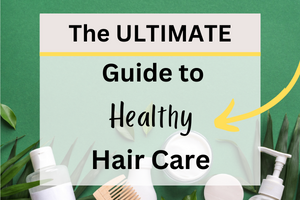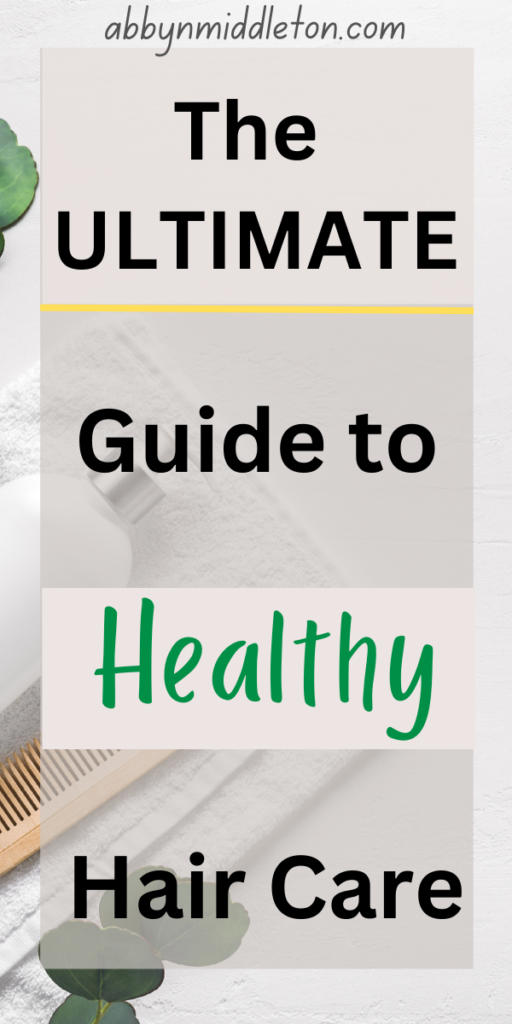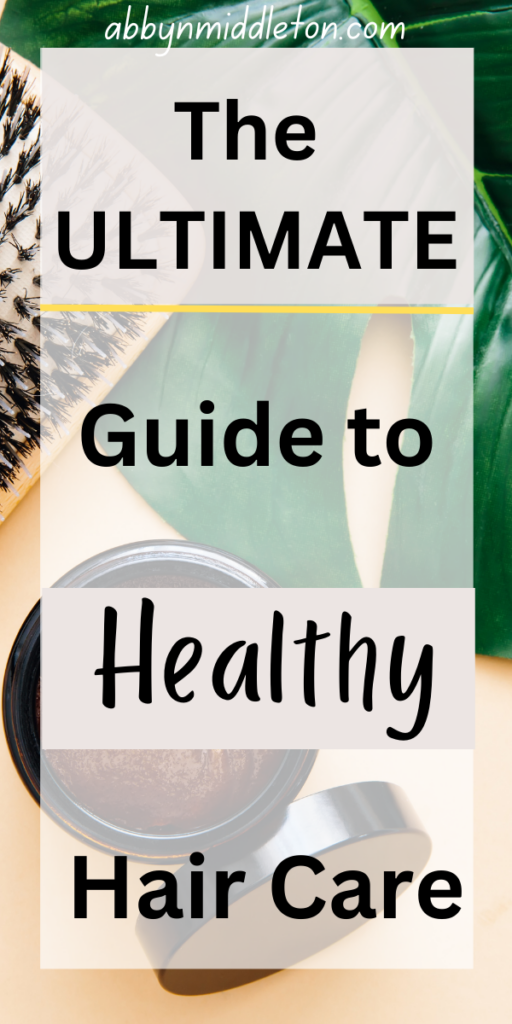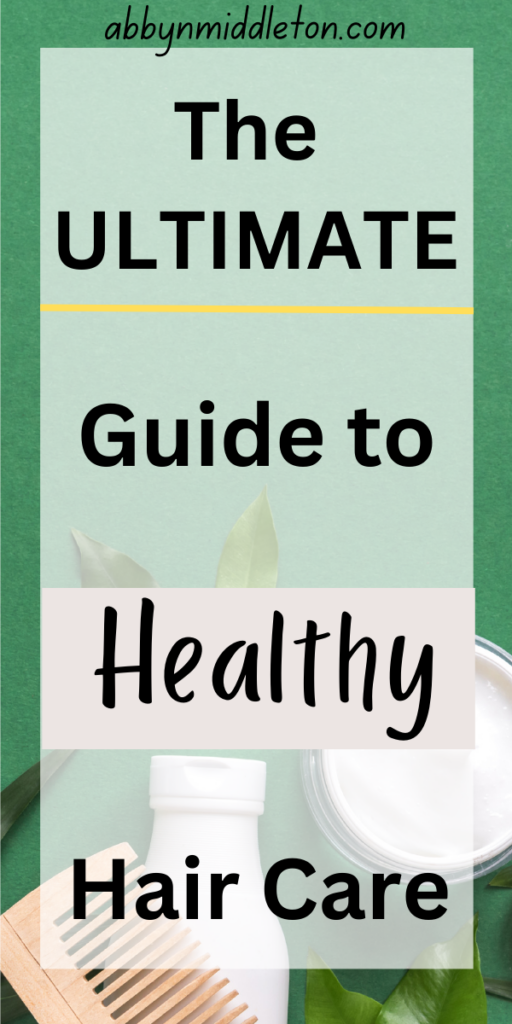The Ultimate Guide to Healthy Hair Care: Tips and Tricks
Healthy hair is not just a matter of good genetics, it’s also about good hair care habits. While some people may be born with naturally strong, shiny hair, everyone can improve the health of their hair with the right approach. In this ultimate guide to healthy hair care, we’ll discuss some tips and tricks for achieving strong, shiny, and healthy hair.
Looking for some of the best hair care tips? For all hair types! Dry, to oily, curly, wavy, coily, or straight hair! We all have our struggle

- Cleanse Your Hair Regularly. The first step to healthy hair care is keeping your hair clean. Washing your hair at least twice a week can help remove dirt, oil, and product buildup that can lead to scalp irritation, dandruff, and other hair problems. Be sure to use a gentle shampoo that’s suitable for your hair type, and avoid using hot water as it can strip the hair of natural oils.
- Condition Your Hair After Every Wash. Conditioning your hair after every wash can help keep your hair moisturized and prevent breakage. Apply a conditioner that matches your hair type and leave it on for a few minutes before rinsing it off. If you have fine hair, use a lightweight conditioner to avoid weighing down your hair.
- Protect Your Hair from Heat Damage. Using heat styling tools can cause damage to your hair over time. If you must use a hair dryer, flat iron, or curling iron, use a heat protectant spray to minimize damage. Also, try to limit your use of heat styling tools to once a week or less to reduce the risk of damage.
- Avoid Overbrushing. Brushing your hair can help distribute natural oils throughout your hair, but overbrushing can cause damage to your hair. Brush your hair gently and avoid pulling or tugging on your hair. Use a brush with natural bristles and avoid using plastic combs, which can cause static and frizz.
- Choose the Right Hair Accessories. Hair accessories can be a great way to add style to your hair, but choose them wisely to avoid damaging your hair. Avoid using tight hair bands, which can cause breakage, and opt for soft scrunchies or hair clips instead. Also, try to avoid using hair accessories that are made of metal or have sharp edges that can damage your hair.
- Eat a Healthy Diet. A healthy diet can have a big impact on the health of your hair. Eat foods that are rich in protein, vitamins, and minerals, such as lean meats, fish, eggs, nuts, fruits, and vegetables. Drinking plenty of water can also help keep your hair hydrated and healthy.
- Get Regular Haircuts. Getting regular haircuts can help prevent split ends and breakage, which can make your hair look dull and lifeless. Schedule a haircut every six to eight weeks to keep your hair looking healthy and well-maintained.

Let’s now talk about how hair coloring damages the hair and how to recognize and prevent damage to have the ultimate guide to healthy hair:
Hair dyeing can cause damage to the hair if not done properly. The chemicals in hair dye can strip the hair of its natural oils, making it dry and brittle. The damage caused by hair dyeing can be temporary or permanent, depending on the extent of the damage and how frequently you dye your hair.
The most common types of hair dye damage include:
- Dryness and brittleness: Hair dyeing can make your hair dry and brittle, causing it to break easily. The chemicals in hair dye can strip the hair of its natural oils, leaving it looking dull and lifeless.
- Split ends: Hair dyeing can cause split ends, which occur when the hair shaft splits into two or more strands. Split ends can make your hair look frizzy and damaged.
- Breakage: Hair dyeing can weaken the hair shaft, making it more prone to breakage. This can cause your hair to look thin and limp.
- Allergic reactions: Some people can develop an allergic reaction to the chemicals in hair dye, which can cause scalp irritation, redness, and itching.

To minimize the damage caused by hair dyeing, it is important to follow a few precautions to have The Ultimate Guide to Healthy Hair Care:
- Choose the right hair dye: Choose a hair dye that is gentle and does not contain harsh chemicals such as ammonia or peroxide. Look for hair dyes that are specifically designed for your hair type.
- Test the dye on a small area first: Before dyeing your entire head of hair, test the dye on a small area first to see if you are allergic to any of the ingredients.
- Follow the instructions carefully: Follow the instructions on the hair dye package carefully, including the recommended processing time.
- Protect your hair: Protect your hair from further damage by using a deep conditioner before and after hair dyeing. You can also apply a leave-in conditioner to help keep your hair moisturized.
- Avoid dyeing your hair too frequently: Dyeing your hair too frequently can cause damage to the hair. Try to space out your hair dyeing sessions to give your hair time to recover.

In conclusion, hair dyeing can cause damage to the hair if not done properly. To minimize the damage, it is important to choose the right hair dye, test the dye on a small area first, follow the instructions carefully, protect your hair, and avoid dyeing your hair too frequently. By following these precautions, you can keep your hair healthy and beautiful.
In conclusion, healthy hair care is all about taking good care of your hair and scalp. By following these tips and tricks, you can achieve strong, shiny, and healthy hair that looks and feels great. Remember to cleanse your hair regularly, condition it after every wash, protect it from heat damage, avoid overbrushing, choose the right hair accessories, eat a healthy diet, and get regular haircuts. This is The Ultimate Guide to Healthy Hair Care.
You might also enjoy a post I have on: Shower Tips For Healthy Hair.
For more reading check out this blog post here.